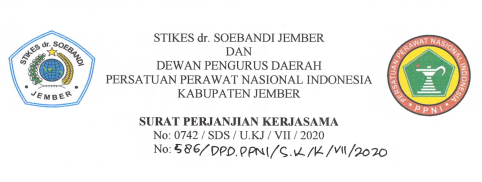The Effectiveness of The Culture-Based Anti-Stunting Education Package on Family Behavioral Changes in Stunting Prevention
DOI:
https://doi.org/10.36858/jkds.v12i2.651Keywords:
Stunting, Education, Coastal AreaAbstract
Stunting remains a pressing global health concern, as evidenced by the prevalence of stunting in Indonesia. The Pasuruan Regency Government continues its efforts to reduce the stunting rate. Coastal areas are characterized by a relatively high incidence of stunting, which stands at 22.8%. The urgency of this research lies in the need for a change in family behavior toward stunting prevention through education optimalization in coastal areas. Stunting prevention education within the family can be summarized into the "Anti-Stunting Education Package", consisting of education on nutritious maternal food intake starting from 1000 days before childbirth, exclusive breastfeeding, adolescent health, and access to clean water. This research aims to demonstrate the effectiveness of anti-stunting education package in changing family behavior to prevent stunting in coastal areas. This was pre-experimental study with a pretest-posttest design approach. The research is conducted in coastal areas with a sample size of 30 stunting families selected through purposive sampling. The results of the research indicate that the Anti-Stunting Education Package is highly effective in improving knowledge, attitudes, and behavioral changes among mothers in supporting stunting prevention in coastal areas. This study falls under TKT 3, which demonstrates the analytical concept and experimental functions, providing stunting education through booklets with a focus on local culture to prevent stunting in coastal areas. The outcomes of this research serve as an innovation and technological development for maritime community well-being.
References
Akombi, B. J., Agho, K. E., Hall, J. J., Wali, N., Renzaho, A. M. N., & Merom, D. (2017). Stunting, wasting and underweight in Sub-Saharan Africa: A systematic review. International Journal of Environmental Research and Public Health, 14(8), 1–18. https://doi.org/10.3390/ijerph14080863
Arsyati, A. M. (2019). Pengaruh Penyuluhan Media Audiovisual Dalam Pengetahuan Pencegahan Stunting Pada Ibu Hamil Di Desa Cibatok 2 Cibungbulang. Promotor, 2(3), 182. https://doi.org/10.32832/pro.v2i3.1935
Badawi, B., Maryam, A., & Elis, A. (2023). Peran Pola Asuh Dato’ Nene’ (Grandparenting) Terhadap Fenomena Stunting Pada Balita Berbasis Budaya Siri’Na Pacce. Jurnal Ners, 7(2), 1449–1454. https://doi.org/10.31004/jn.v7i2.18629
Handayan, D., Kusuma, E., Puspitasari, R. A. H., & Nastiti, A. D. (2022). Faktor Pengetahuan Ibu Dalam Pengolahan Makanan dan Pada Balita Di Wilayah Pesisir. Jurnal Keperawatan, 14(September), 885–890.
Handayani, Dwining, Kusuma E, Puspitasari H, nastiti, A. (2022). Pemanfaatan Kawasan Rumah Pangan Lestari (Krpl) Dalam Mengurangi Kejadian Stunting Yang Berwawasan Agronursing Di Kawasan Pesisir Desa Watuprapat Kecamatan Nguling Kabupaten Pasuruan Dwining. 5(4), 1164–1171.
Handayani, D., Kusuma, E., Puspitasari, R. A. H., & Nastiti, A. D. (2022). Jurnal Aisyah : Jurnal Ilmu Kesehatan The Factors Affecting Stunting on Toddlers in Coastal Areas. 7(3), 755–764. https://doi.org/10.30604/jika.v7i3.967
Januarti, L. F., & Hidayathillah, A. P. (2020). Parenting Culture on The Role of Father in Prevention of Stunting in Toddler. Babali Nursing Research, 1(2), 81–90. https://doi.org/10.37363/bnr.2020.1211
Kemenkes RI. (2018). Hasil Riset Kesehatan Dasar Tahun 2018. Kementrian Kesehatan RI, 53(9), 1689–1699.
Kusuma, E., Handayani, D., Nastiti, A. D., & Puspitasari, R. A. H. (2023). Edukasi Perilaku Hidup Bersih dan Sehat (PHBS) dalam Membangun Gaya Hidup Sehat Sejak Dini di Wilayah Pesisir Kota Pasuruan. Jurnal Kreativitas Pengabdian Kepada Masyarakat (PKM), 6(9), 3522–3533. https://doi.org/10.33024/jkpm.v6i9.10841
Laksono, A. D., & Megatsari, H. (2020). Determinan Balita Stunting di Jawa Timur: Analisis Data Pemantauan Status Gizi 2017. Amerta Nutrition, 4(2), 109. https://doi.org/10.20473/amnt.v4i2.2020.109-115
Nabilah, T. S., Rahayu, G. M., Amrulloh, F., & Triwibowo, B. (2022). Gerakan Pencegahan Stunting Melalui Pemberdayaan Masyarakat Dengan Mengadakan Sosialisasi Dan Edukasi. Jurnal Pengabdian Kepada Masyarakat Nusantara (JPkMN), 3(2), 1472–1478.
R.A. Helda Puspitasari, E. A. (2020). E-Booklet Based Educational Model With Online Media To Increase Knowledge Of Young Women About Breast Self-Examination. In International Agronursing (Issue 0331).
Rahmawati, L. A., Hardy, F. R., Anggraeni, A., & Purbasari, D. (2020). Faktor-Faktor yang Berhubungan dengan Stunting Sangat Pendek dan Pendek pada Anak Usia 24-59 Bulan di Kecamatan Sawah Besar Related Factors of Very Short and Short Stunting In Children Aged 24 - 59 Months in Kecamatan Sawah Besar. Jurnal Ilmiah Kesehatan Masyarakat, 12(2), 68–78.
Ringgi, M. S. I. N., & Keuytimu, Y. M. H. (2022). Intervensi Berbasis Edukasi pada Ibu terhadap Feeding Practice Ibu dalam Upaya Peningkatan Status Gizi Anak Stunting pada Usia 6-24 Bulan. Jurnal Kesehatan, 13(1), 118–123. https://doi.org/10.26630/jk.v13i1.2852
Rita Kirana, Aprianti, N. W. H. (2022). Pengaruh Media Promosi Kesehatan Terhadap Perilaku Ibu Dalam Pencegahan Stunting Di Masa Pandemi Covid-19 (Pada Anak Sekolah Tk Kuncup Harapan Banjarbaru). Jurnal Inovasi Penelitian, 2(9), 2899–2906.
Sugiyanto, S., & Sumarlan, S. (2021). Analisa Faktor Yang Berhubungan Dengan Stunting Pada Balita Usia 25-60 Bulan. JURNAL KESEHATAN PERINTIS (Perintis’s Health Journal), 7(2), 9–20. https://doi.org/10.33653/jkp.v7i2.485
Syarfaini, Nurul Latifah Tahar, T., Qoni Hadza, R., Husain, Z., Sumarlin, R., & Nurfadillah, A. (2024). Efektivitas Media Edukasi Gizi Terhadap Upaya Pencegahan Stunting : Literature Review. Al GIZZAI: PUBLIC HEALTH NUTRITION JOURNAL, 1(1), 59–79. http://dx.doi.org/10.24252/algizzai.v%25vi%25i.44183%0Ahttp://creativecommons.org/licenses/by/4.0/
Tanzil, L., & Hafriani, H. (2021). Faktor-Faktor Yang Mempengaruhi Terjadinya Stunting Pada Balita Usia 24-59 Bulan. Jurnal Kebidanan Malahayati, 7(1), 25–31. https://doi.org/10.33024/jkm.v7i1.3390
Umami, N., Ariyanti, R., Yulianti, I., Citra, N., Ratnanengsih, R., Noviani, D., Gusriani, G., & Lestary, T. T. (2023). Sosialisasi Edukasi Tentang Asuhan Kebidanan Berbasis Budaya Guna Meningkatkan Pengetahuan Pada Kelompok Ibu Hamil. SELAPARANG: Jurnal Pengabdian Masyarakat Berkemajuan, 7(3), 1688. https://doi.org/10.31764/jpmb.v7i3.16484
UNICEF/WHO/WORLD BANK. (2021). Levels and trends in child malnutrition UNICEF / WHO / World Bank Group Joint Child Malnutrition Estimates Key findings of the 2021 edition. World Health Organization, 1–32.
Downloads
Published
How to Cite
Issue
Section
License
Copyright (c) 2024 Jurnal Kesehatan dr. Soebandi

This work is licensed under a Creative Commons Attribution-NonCommercial-ShareAlike 4.0 International License.




